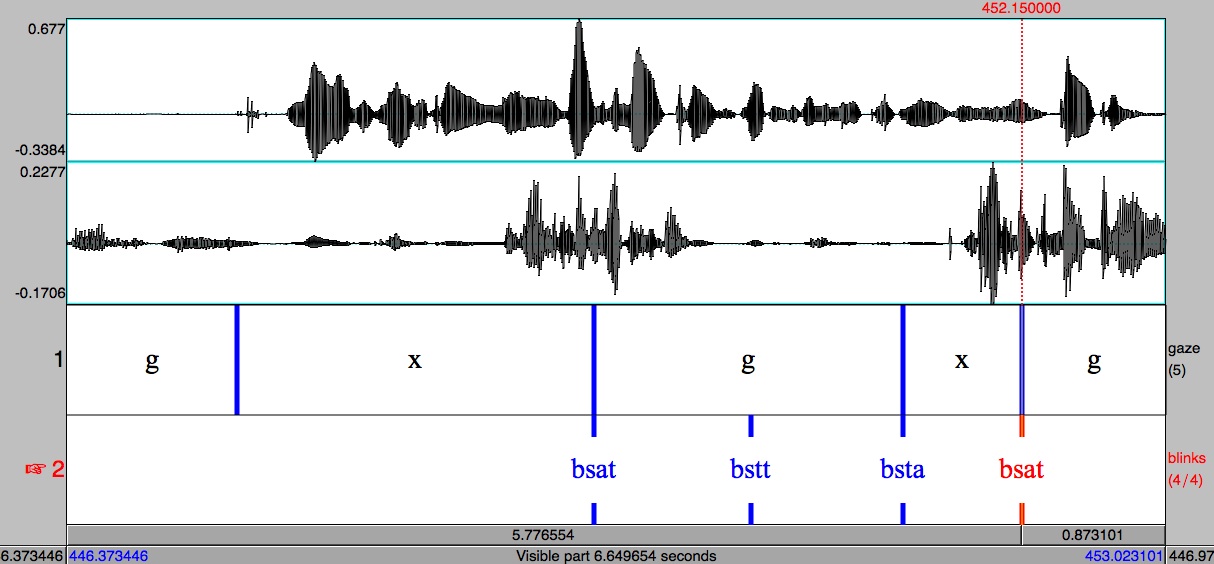Annotating Gaze
Gaze is relatively simple to annotate, because we only distinguish two states: a subject is gazing at the head of the partner, or the subject is gazing elsewhere. The former is marked "g", the latter "x". Thus the gaze tier in Praat consists entirely of alternating "x" and "g" intervals. No other notation is done.
Although it may sound odd, it is generally very obvious when a speaker is gazing at their partner, and when they are not. When looking away, this is the point at which the eyeball first starts to move away from the partner. When looking towards, it is the point at which the gaze lands on the partner.
About half the time, a change of gaze direction will be accompanied by a blink. In those instances, the point at which the change of gaze is noted will be exactly the same point as that at which the blink is noted. As we will see later, the blink when looking away is usually labelled "bsta", and that noted when looking towards the partner is labelled "bsat". These blinks always coincide with the edge of an interval on the gaze tier.
Example: Speaker H (top waveform), gaze and blinks only.

|
In this example, the first gaze switch (looking away from partner) is not accompanied by a blink, but the remaining three switches are. There is an additional blink ("bstt") that is unconnected with gaze shifts.
